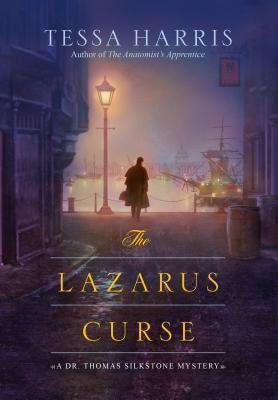The anatomist's knife hovers over the still-supple corpse of a young woman, her swollen womb a reminder of the slim margin between life and death, especially in the 1700s.
I have spent years studying the history of birth--and also of death--in the eighteenth and nineteenth centuries. In my present work at the Dittrick Medical History Center, I've also become quite familiar with the anatomy lab (the museum holds an enormous collection of dissection photos, and the chief curator is co-author of Dissection: Photographs of a Rite of Passage in American Medicine 1880 - 1930). There is, in fact, a bone saw on the shelf behind my desk this very moment. It's easy for most to imagine the horror of these instruments, but with such tools doctors did more than open bodies: they opened a path to greater medical understanding.
Even so, this understanding came with consequences. Some of them deadly.
William Hunter, physician to Queen Charlotte, performed as a man-midwife. He dissected the bodies of pregnant women, learning from their life-less forms the problems and process of birth. His atlas, The Gravid Uterus, was one of the finest in the world. The figures of open wombs, many with the child still inside, offer mute revelations about birth's darker side--and Tessa Harris expertly explores just such grim shadows.
Bodies were not easy to come by. Wealthy families would never consent to have their kith and kin turned to such uses, and so class determined who went under the anatomist's knife. As Tessa's latest book attests, however, race played an equally important role. A recent analysis of remains at the Medical College of Georgia revealed that nearly 80% were African American, many stolen from graveyards [1]. Some may think that such problems pertain only to the United States, but though slavery was not practiced "officially" in Britain, British slave-owners did not (unsurprisingly) release their slaves when returning to their native England. So what happened to these men and women?
History's horrors are often glossed--and in this way, fiction sometimes tells the truth more plainly. I return to the first image of Harris's book: a knife, flashing in the light, ready to descend on the naked flesh--of a pregnant slave. How did she come to be there, so lifelike and eerily beautiful? And why are there so many others like her appearing, suddenly, on the slab? These are the questions of Thomas Silkstone, the hero of Harris's Anatomist's Apprentice series--the calm, cool, and determined doctor must once again turn sleuth to find the answers.
Harris's fourth book makes no bones about what spurred scientific exploration: money, politics, power. Beginning with a Jamaican expedition gone wrong, The Lazarus Curse takes the reader on a dark journey reminiscent of Heart of Darkness... but firmly rooted in British soil. From the horrifying gaze of the mutilated Obeah-man (shaman) to the cold body of a headless corpse in the Thames, the story snakes through the dark of human agony--and it turns out that the dead need not rise to haunt. No one, it seems, is truly safe from manipulation, not even Thomas, not even the lovely Lady Lydia, for the supernatural is not nearly as horrific as the misdeeds of man against man.
[1] Warner, John Harley and James Edmonson. Dissection: Photographs of a Rite of Passage in American Medicine. Blast Books. 2009. P18

